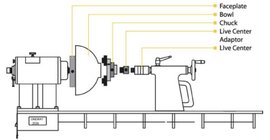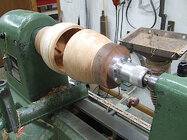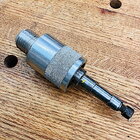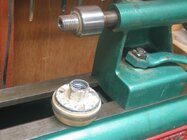I am wondering if anyone uses this adapter to improve chuck centering onto a tenon? Trying to figure out if it is worth the bother. Description of the adapter:
- Turn the outside of the bowl, including the foot or tenon for chucking.
- Using the Live Center adapter, attach a chuck or faceplate to the Live Center.
- Move the tailstock (with the Live Center/chuck assembly attached) up to the bowl and grab the foot or tenon on the bowl while it is still attached to the lathe.
- You can now screw the chuck onto the headstock, and your bowl will be precisely centered and ready to be hollowed out or cored.




